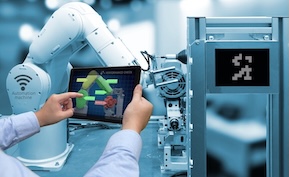ERP
Voice & Natural Language Interfaces in ERP: UX Revolution or Overhyped?

Summary: Voice assistants and natural language interfaces (NLIs) are reshaping consumer tech—but what about ERP? Imagine approving a purchase order by saying, “Approve PO #5423,” or asking, “What’s our current cash flow forecast?” Are these interfaces the next big user experience breakthrough for ERP, or just a flashy add-on with limited real-world value?
What are natural language interfaces in ERP?
Natural language interfaces allow users to interact with ERP systems through voice commands or conversational text. Instead of navigating menus or dashboards, employees can request data, trigger workflows, or approve actions using simple language.
Why NLIs are appealing in ERP
- Accessibility: Reduces training needs for non-technical staff.
- Speed: Cuts down time spent navigating complex ERP menus.
- Mobility: Field workers can interact with ERP hands-free.
- Productivity: Enables multitasking while pulling up data or running reports.
Real-world ERP use cases for voice & NLI
- Finance: “Show me invoices overdue by more than 30 days.”
- Procurement: “Create a new supplier order for 1,000 units of raw material A.”
- HR: “How many vacation days does Maria have left this year?”
- Supply chain: “What’s the estimated delivery time for shipment #849?”
Technology enablers
Several technologies are making ERP voice interfaces possible:
- AI-driven NLP: Machine learning models that interpret context-specific ERP commands.
- Voice assistants: Integration with Alexa for Business, Microsoft Cortana, or custom enterprise bots.
- APIs: Middleware that connects NLI front-ends with ERP back-ends.
Challenges & limitations
- Accuracy: Misinterpreted commands can cause costly mistakes.
- Security: Voice commands must be authenticated to prevent unauthorized actions.
- Noise interference: Voice systems struggle in busy warehouses or offices.
- Complex queries: Not all ERP workflows can be condensed into simple natural language commands.
Are NLIs a revolution—or hype?
For routine queries and simple approvals, NLIs can significantly enhance ERP usability. But for complex, multi-step processes, graphical dashboards and structured workflows remain essential. Most likely, NLIs will supplement—not replace—traditional ERP interfaces.
Best practices for adopting ERP voice interfaces
- Start small: Deploy NLIs for reporting and approvals first.
- Prioritize security: Implement strong voice authentication and logging.
- Design for context: Use NLIs where hands-free or quick access adds clear value.
- Iterate: Continuously refine NLP models based on user feedback and usage data.
Conclusion
Voice and natural language interfaces won’t replace ERP dashboards, but they can dramatically improve user experience in specific contexts. Companies that strategically deploy NLIs will empower employees to interact with ERP systems more naturally—driving both efficiency and adoption.






